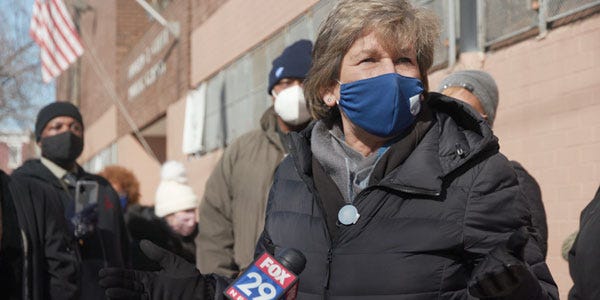The grim toll of the coronavirus pandemic has many measures: Twenty-eight million infections and 500,000 lives lost. Eight million more people enduring poverty, many of them children. Family businesses shuttered, weddings without guests, and epidemics of depression and isolation. The shocking one-year decline in life expectancy in the first half of 2020 alone. It’s tempting to tick through “what-ifs.” What if the last administration’s response had been competent, not chaotic? What if officials had prioritized reopening schools over bars and gyms, and used the time schools were closed to prepare them to safely reopen? But we must shift from “what if?” to “what now?”
My union has been working to safely reopen schools for nearly a year, and we welcome the sea change the new Biden administration brings. Yet some critics, in a cynical attempt to exploit families’ legitimate frustrations, spread the myth that teachers and their unions don’t want to return to in-person teaching and learning. Educators know that in-person learning is essential for children to thrive; they are asking to be safe in the midst of a once-in-a-century pandemic. With commonsense safety protocols, COVID-19 testing and vaccines, our public schools can reopen for in-person learning and can do so with the overwhelming support of teachers and support personnel.
The AFT recently polled educators, who have been working harder than ever to help our kids in this pandemic. Eighty-five percent of AFT teachers and school staff support a return to in-person learning with the science and health and safety guardrails that the AFT laid out — safeguards like masks, physical distancing, sanitizing, ventilation upgrades, testing and contact tracing. Educators also strongly approve of the Biden administration’s plan to reopen schools.
This is not to suggest that educators are not afraid of this deadly virus that spreads asymptomatically and invisibly. Our poll found that 64 percent worry they might get infected with COVID-19 at work and 71 percent fear they could infect someone in their family. Yet the vast majority are willing to return to their schools with the necessary safeguards, including priority access to the vaccine, given the essential work they do.

Educators’ overwhelming support for a safe return to in-school learning raises the question of whether, if the federal government early in the pandemic had provided a plan to reopen schools similar to the Biden administration’s, with the resources to fund it, millions more students would be learning in person now, instead of remotely. It’s time to work with teachers and their unions to reopen schools safely for in-person instruction, instead of blaming them for the continuation of a pandemic made incalculably worse by the last administration.
The Centers for Disease Control and Prevention recently issued new guidelines for reopening schools. The guidelines reinforce the need for mitigation strategies to prevent the spread of the coronavirus, testing to detect asymptomatic transmission, vaccine prioritization for teachers and school staff, and accommodations for educators with pre-existing conditions and those taking care of others at risk.
Teachers unions have negotiated such health guardrails in Boston, Chicago, New York City, San Francisco, Washington, D.C., and elsewhere — playing a critical role in enabling in-person learning to resume that other school districts could emulate.
But countless places lack the resources to implement the necessary safety provisions, because the pandemic and resulting recession have drained state and local coffers. The Biden administration’s $1.9 trillion American Rescue Plan would fund vaccinations, direct relief to families bearing the brunt of the COVID-19 crisis, and provide crucial local and state aid — including $170 billion to help schools, colleges and universities reopen and operate safely.
This funding is needed immediately to safely reopen schools for in-person teaching and learning for the remainder of this semester, and to allow schools to prepare for this summer, which can and should be a voluntary “second, second semester.” Wealthy parents have an array of summer programs for their children. All students, particularly from under-resourced communities, should have access to programs this summer for reconnection, recreation, enrichment, social and emotional support, and academic growth.
Even as we deal with the challenges at hand, we must reimagine learning beyond COVID-19 and create the conditions to help all children thrive. Rather than the traditional spring state testing, we should assess and respond to students’ wide-ranging needs; support our most vulnerable students; focus on educators’ professional learning and growth to meet these unprecedented challenges; and promote equity and excellence in all of our public schools.
As we approach one year since the first school closures to prevent the spread of the coronavirus, students, families and educators are understandably frustrated. But we all want the same thing — to be together in school, with the conditions and support not only to recover from what has been lost but to thrive and grow. People are recognizing anew how important our public schools are. Let’s do what is needed to make them safe for students and staff to return.



